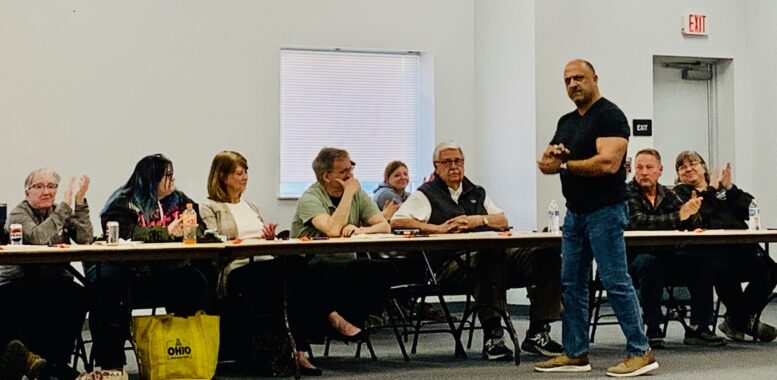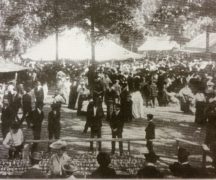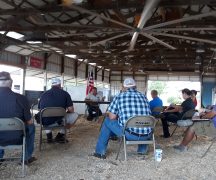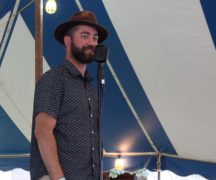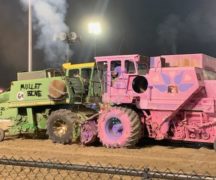By JULIE CARLE
BG Independent News
The Wood County Fair Board has a new mission statement that goes beyond the annual one-week county fair.
At last Thursday’s meeting, the board approved a new mission statement that expands beyond the siloed focus of the singular summer event hosted on the Wood County Fairgrounds in Bowling Green.
The new statement still includes the importance of celebrating “the rich traditions and heritage that define our community, with the fair serving as our cornerstone event.” However, the mission now makes a strong statement about the board’s role as “a vital community asset.”
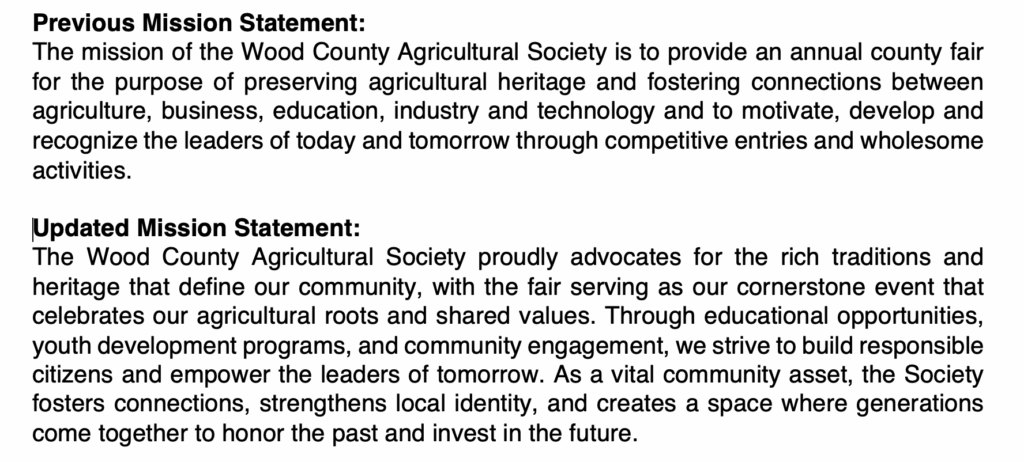
The decision to update the fair board’s mission statement comes after the Wood County Agricultural Society hosted Ian Hill’s “You Make the Difference” training on April 14. Hill’s compelling message to several area agricultural societies was “To remain relevant and impactful, you need to reframe yourselves as community builders rather than just fair organizers.”
Hill, a Nevada resident, is the face of the nationwide initiative supported by fairs.com to help fairs and agricultural societies reframe themselves as community assets to remain relevant and impactful in a changing landscape.
Scott Hillyer, CEO of fairs.com, agreed to partner with Hill to sponsor the project to train fairs and agricultural societies across the nation how to be successful in the changing environment. “A key part of our strategy is to help fairs connect with new fans and keep their loyal visitors thrilled,” he said.
Hillyer and Hill have a shared belief that communities are isolated from each other. “We are as connected as we’ve ever been with our phones, but we’re also isolated as well,” Hillyer said. “When you look at the events that actually bring communities together? It’s fairs.”
To date 14 states have been awarded funds for Hill to help train fair organizations. Wood County was one of seven sites in Ohio to host the training to help fairs and agricultural societies increase the number of volunteers, decrease expenses, increase revenues and community impact.
“I believe this thing called a fair is one of the most important, iconic institutions in our community,” Hill said during the initial three-hour training. “It touches every citizen from toddler to those in the sunset of their days, and it brings people together like nothing else can.”
The premise of the training was to equip fairs to face the issues that have impacted attendance, revenues and involvement. “What happens over the next 48 months will determine the next 25 years in the industry,” he said. “If we don’t understand what the times require, we’re going to die.”
Volunteerism used to be expected. “The reason you are here, is because someone along the way–a mom, a dad, grandparent, coach, or teacher–instilled in you that you needed to give back,” Hill said.
One of the keys is to prove the fair is valuable and to create community around the agricultural society and the fair. “We are in a battle for the discretionary volunteer power and donor. Prove to me your thing is worth my time,” he said. “People want to be part of community, but right now they just don’t know it because we don’t tell the story.”
Community cohesion is created through connectedness, which leads to community pride and community resiliency. And when community pride is present, there is less crime, higher graduation rates, higher property values, lower teen pregnancy and drug use.
“You’re not in the fair business,” Hill said. “The fair is just a vehicle to something deeper and more important.”
The fair was started over 150 years ago to connect people, to ensure when times got tough, neighbors would help neighbors. “We’ve got to get people doing things together, because when you say ‘Come and help us build community,’ more people will see themselves in that,” he said.
Educating the youth is definitely one of the goals of the fair, through livestock and other projects. The real crux of the lessons though are in the experiential learning that happens when they do their projects or help run a livestock show. “We also educate kids and adults to teach people where their food comes from, which is pretty important nowadays,” he said. “We are building the citizens of tomorrow.”
At the fair board meeting, President Paul Perry impressed on the board leadership the importance of their job at sharing the narrative of the fair board. The training initiative is designed to help fair boards understand they can make a difference, “empowering board to be able to look differently at things and how they can empower and build their communities,” Perry said. “We need to have more tools in the toolbox to look at enhancing the time, talent and treasure.”
With the approval of the revised mission statement, Perry asked every member to think about their purpose on the board.
“What value do we bring to the fair? What value do we bring to the community? And what is your reason? Figure out your story, and it is not just, ‘I’m here for the kids,’” he said. “The kids are a very vital and important part of what we do, because each youth that we touch, we’re building them into better citizens of tomorrow. But it’s much bigger than the kids. We are truly building the community.”
The organization is larger than helping the youth. Additionally, the fair board is not just about the fair either, he said. “We have 51 weeks out of the year that we are providing other events, the 4X4 Fest, 4th of July Fireworks, building rentals, and all the interactions that we have with the community. It truly is about building community.”
Once every board director considers their “why” for being on the board, then the board as a whole can reflect on its role and how it can provide the best service possible to the community.
The fair board plans to boost its community communications through a dedicated social media campaign and implement a “100 cups of coffee” concept to talk with and listen to community influencers about the fair and how to create a more cohesive sense of belonging with the traditional supporters and beyond. Perry and others are committed to work on building trusting relationships with people of influence, “not just when we need something,” but to create that sense of community.
The approved new mission statement is:
“The Wood County Agricultural Society proudly advocates for the rich traditions and heritage that define our community, with the fair serving as our cornerstone event that celebrates our agricultural roots and shared values. Through educational opportunities, youth development programs, and community engagement, we strive to build responsible citizens and empower the leaders of tomorrow. As a vital community asset, the Society fosters connections, strengthens local identity, and creates a space where generations come together to honor the past and invest in the future.”

